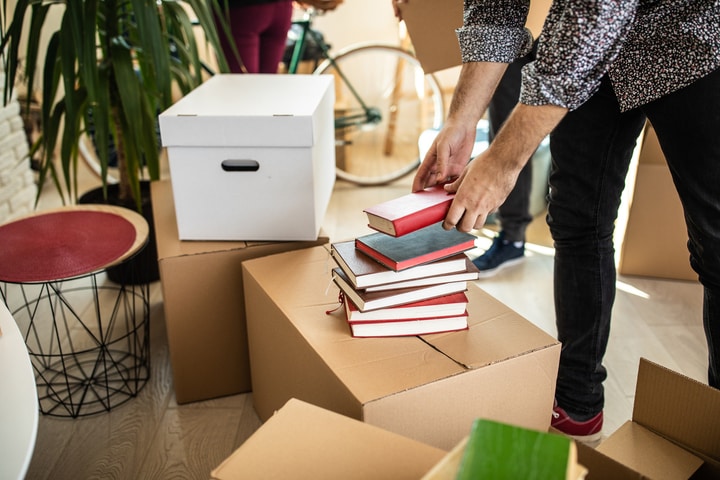How should Hadrcover books be packed for a move?

You don’t have to be a book hoarder to have a collection of inspiring or nostalgic books that are worth bringing to your new house or apartment.
Even though they are considered the easiest things to pack, people make some common mistakes that can cause unnecessary heartache when traveling and unpacking. The good news is that packing books for moving is simple if you know a few tricks.
Piece of Cake moves hundreds of boxes of books every week, and we’ve compiled a list of our best library moving tips:
- Improve the efficiency of your array.
You’ve heard it before: don’t pay to bring items you’ll throw away when you get there. You’ll be able to travel with less baggage if you do your spring cleaning before you pack.
Divide your books into three piles to make the process of culling your stock easier:
Undecided items should be saved and donated.
The key to effective packaging is to avoid agonizing over each item, which is why there is a pile of undecided products. A time vacuum can be compared to nostalgia. If you’re not sure, put the intriguing title on pile 3 and come back to it later. - The required materials
Book boxes that have been overstuffed are notorious for being heavy. They can also cause injuries to DIY movers if packed incorrectly.
Start with high-quality materials, such as a thicker cardboard box than is usually used. You can buy book boxes from movers like Piece of Cake, or check out our guide to finding free boxes on this site, which involves approaching the nearest bookstore for used mailing boxes in decent shape. When it comes to transporting books, bigger isn’t always better; the more books you have in one crate, the heavier it becomes and the more difficult it is to lift and move. You’ll also need strong packaging tape and packing paper to keep the package safe and secure during shipping.
Loop tape from the base to at least halfway up the box’s sides until it’s firmly designed. Cover the package’s bottom with wrapping paper to provide a buffer between the exterior moisture and the first layer of books. If you’re shipping valuable books, waterproof bubble wrap can be used on the bottom of the bag. - Different types of books and how to pack them
Now that you have the books organized by size and sense, you can begin filling shelves. The general rule is that heavy books should be placed at the bottom.
If you’re packaging important hardcover books, seal them separately and put them inside the box upright, spines facing the box’s back. To prevent them from moving around, place a layer of thick cardboard between each one. Instead of stacking another sheet of hardcover books on top of them, use several smaller boxes if they are wide and thick.
Laying less valuable hardcover books flat in the box’s base and piling them one on top of the other is an easy and secure way to go. Place the books with the pages facing the bottom of the box to avoid the covers collapsing and creases. Few consumers like to stack their books with the spine facing down on the bottom of the box, but this will result in harm from the layers above them if done incorrectly.
Ordinary paperbacks should be neatly lined in rows, with similar-sized books stacked together and the empty room filled with packaging paper. You can mix and match the stacking approaches here, but stop having something on an angle or jammed in too tightly because it can warp during transport.
If there are holes between the books and the package when packaging either of these types, use scrunched up wrapping paper to create a barrier between the books and the box. - The last steps
Place an additional sheet of wrapping paper over the top of your books before sealing the package until it’s ready to be packed. Apply a generous amount of tape to the cover, then take out your marker and write a detailed label on the case.
If you’re putting your books in storage, the precautions we’ve listed will keep them safe for the time being. Try replacing the wrapping material with acid-free paper for long-term storage to avoid discoloration.
Unpacking books is a simple job that allows you to collapse a few empty boxes and clear some room easily, so even young family members can assist.
There’s nothing quite like putting common names on the bookshelf to make you feel at ease.